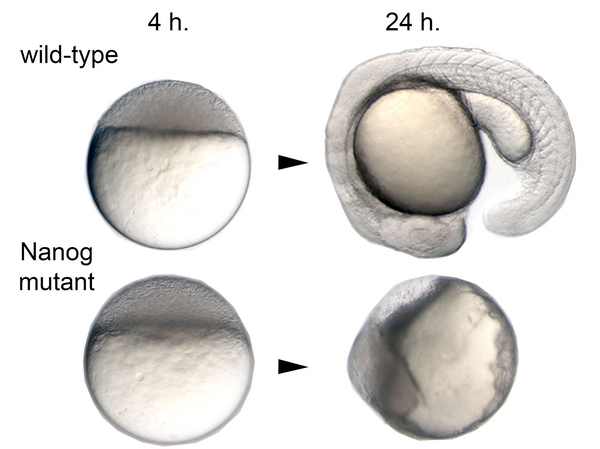Dr. Daria Onichtchouk (CIBSS-AI), Institute of Biology I - Developmental Biology (Faculty of Biology), University of Freiburg
Zebrafish development starts from 3 hours of transcriptionally silent period, followed by the major wave of zygotic gene expression (Zygotic Genome Activation, or ZGA). In Drosophila and zebrafish, ZGA depends on transcription factors that provide large-scale control of gene expression. In zebrafish, homologs of stem cell transcription factors Pou5f3 and Nanog play this global role. Graded BMP signals define dorso-ventral polarity in metazoan embryos ranging from insects to humans. Pou5f3 and Nanog control the action of BMP patterning signals; the timing and mechanisms underlying this effect remain mostly unclear. Studies in Drosophila suggested a model, where ZGA activator facilitates binding of other transcription factors to regulatory DNA by locally increasing chromatin accessibility. The goal of the project is to understand how the interaction BMP signaling intermediates Smad1/5/8 with DNA depend on zebrafish ZGA activators. In zebrafish, BMP signaling gradient specifies the dorso-ventral fates of embryonic cells starting shortly after ZGA and throughout gastrulation (4-10 hours post-fertilization). Within this time frame, we will compare Smad occupancy, genomic locations and size of open chromatin regions in the wild type zebrafish embryos and mutants by Pou5f3 and Nanog. The expression of BMP target genes will be measured using RNA-seq and related to chromatin state changes. Functional dynamics of Nanog- Pou5f3- Smad interaction on the embryonic enhancers will be inferred from the data using computational modeling in collaboration with J. Timmer (area D4). The results may deepen our understanding of gene regulatory principles in early development.






